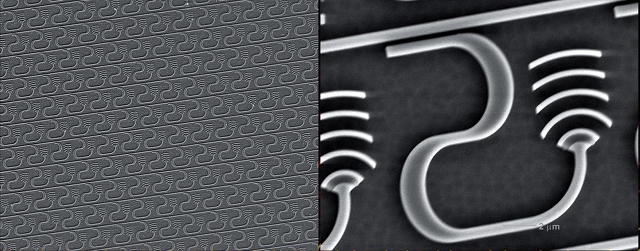Nanoscale antennas, etched in chip, provide precise control of light
Ars Technica » Scientific Method 2013-01-09

A single antenna—like a single ear, eye, or audio speaker—works, but combining two or more are better. This works for sending as well as receiving. By sending the same signal from two or more identical antennas in phase with each other, you can boost it, make it extremely directional, or change its shape. This is the concept behind phased arrays, which have found great success in communications, radar, and radio astronomy.
Until now, phased arrays have mostly utilized radio frequencies. Modern nanoscale technology is now allowing researchers to create phased arrays for optical (visible) light. Jie Sun and colleagues fabricated a phased array of 4,096 microscopic antennas on a single silicon chip. This allowed them to shape the output waveform, so they could transmit an image of the MIT logo by combining the light from each tiny antenna in precise ways—something that could not be done with (say) a similar array of LEDs. Potential applications for this research include biomedical imaging, holography, and laser communications.
Phased arrays have had their greatest success at radio wavelengths, where they have been used for radar, AM radio broadcasting, and so forth. (In radio astronomy, the technique goes under the name "aperture synthesis" and led in part to a Nobel Prize for Martin Ryle and Anthony Hewish.) The idea in all these cases is the same: begin with one signal, but multiple identical antennas. By combining the output from each antenna, researchers can selectively create interference patterns, boosting the signal at distance or canceling it out entirely where it might overlap with another signal.
Read 6 remaining paragraphs | Comments